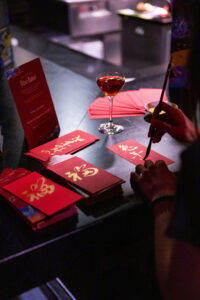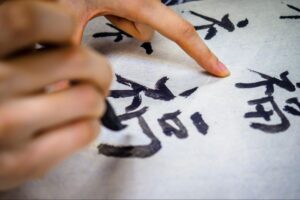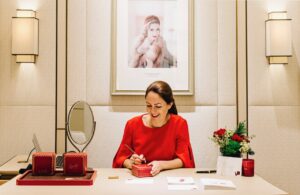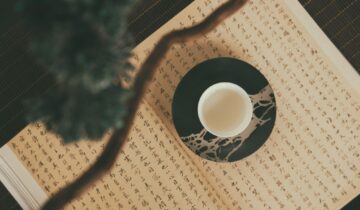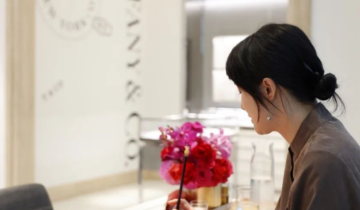The Four Treasures Of The Study
Four Treasures Of The Study is an expression that refers to the brush, ink, paper, and stone used in Chinese writing as well as other East Asian calligraphic practices. It is also known as the Four Jewels of the Study or Four Friends of the Study.
The Four Noble Arts Of The Scholar
Chinese writing is one of four noble arts in China and is considered to be a delicate practice where the Chinese language, history, philosophy, and artistic creativity unite. The other refined arts of the country, also known as the Scholar’s arts, are music, painting, and weichi which is a Chinese Go game. They were the four major academic and artistic talents required of the upper-class ancient Chinese scholars. Chinese calligraphy is a refined art for the improvement of an individual’s mind.
The passionate Calligraphy artists at The Calligraphy Co. specialise in traditional and simplified Chinese calligraphy and painting traditions. Our Calligraphy artists also offer services such as modern calligraphy, embossing, custom embroidery, and product and fashion illustration to help elevate your company’s brand activation events.
What Are The Four Treasures Of The Study?
Brush
The brush is the oldest component of the Four Treasures Of The Study. The most ancient brush used in Chinese writing was found in the Han dynasty from 202 BC to 220 AD. The writing instrument inherits three main components: hair, holder, and a sheath to cover the tip when it is not in use.
Chinese brushes are generally made from animal hair such as a deer, goat, sable, rabbit, or other animal and are created using materials such as bamboo. However, special brushes may have handles of exquisite matters such as sandalwood, jade, bone, ivory, or other fine materials. Each type of hair has a specific ink volume, and therefore gives distinguishing strokes and are used for different styles of Chinese writing and calligraphy.
Brushes are put into the following classes categorised: soft, mixed, or hard. The most prestigous and valuable brushes are a mix of yellow weasel, goat and rabbit hair, known as the Huzhou ink brush. In today’s day and age, brushes are predominantly proconstructed from white goat hair, black rabbit hair, yellow weasel hair, or a combination of them.
Ink
The first Chinese writing inksticks were created during the Han dynasty. They are an artificial ink based on natural minerals such as graphite and vermilion. On the other hand, modern inksticks are generally made of either lacquer soot, pine soot, or oil soot. Soots are collected, then mixed with glue. Higher quality inksticks also use powdered spices and herbs, adding to aroma and providing some protection to the ink itself.
The glue, soot, and spice mixture is then pressed into shape and allowed to dry. This process can take 6 weeks, depending on an inkstick’s dimensions. The best ink sticks are fine grained and have a light, slightly ringing sound when tapped. They are often decorated with poems, calligraphy, or bas relief, and painted.
Paper
Bamboo slips and silks were utilised for Chinese writing before the invention of paper was introduced during 100 AD. The most highly-valued paper for Chinese writing is Xuan paper or rice paper. Fabricated of plant fibre, the paper is soft, fine-textured, moth resistant, inherits high tensile strength, and is extremely long-lasting.
The paper has a reputation for lasting 1,000 years. After the paper was invented, it was favoured by calligraphers because of its absorbent nature and the variety of textures. Chinese writing is commonly executed on white paper. During special occasions such as festivals or celebrations however, other colours of paper are used such as red.
Stone
The earliest inkstones date back to the Han dynasty. Inkstones are used to grind the ink stick into powder which is then mixed with water to create ink for Chinese calligraphy. It is also used to hold the liquid ink. This instrument is often made of fine, solid natural stones that are flat and smooth.
Traditional Chinese writing ink is commonly solidified into sticks for more efficient transport and effective preservation. Calligraphy artists would keep water in a separate container and then slowly combine with the inkstick powder on the flat surfaced inkstone.
Brand Activation & Chinese Writing Services
If you are looking for the finest Chinese calligraphy brand activation artists across Australia and New Zealand to enhance your brand experience, contact us or visit our website to discuss how our expert artists can create a bespoke and personalised experience for your valued clients and guests.
In addition to traditional and simplified Chinese calligraphy, The Calligraphy Co. artists provide a range of artistry services, including western modern and traditional calligraphy, hand engraving, hand embroidery, product and fashion illustration, leather and product embossing, and more.

